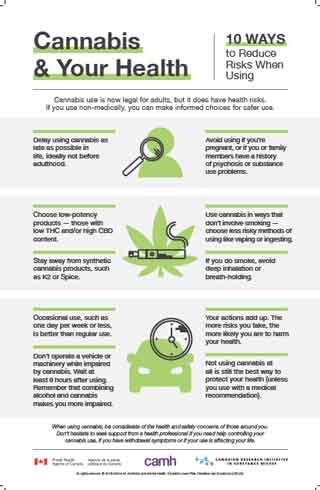As the conversation surrounding medical marijuana continues to evolve, so too does our understanding of its benefits and potential pitfalls. In recent years, a growing number of patients have turned to cannabis to alleviate symptoms of various medical conditions, from chronic pain to anxiety disorders. While many sing its praises, celebrating the relief and improved quality of life it can provide, it is equally important to delve into the less-discussed aspects of this herbal remedy—specifically, the side effects that can accompany its use. In this article, we will explore the complex landscape of medical marijuana side effects, shedding light on the experiences of users, the science behind these effects, and the ongoing discourse that surrounds this multifaceted treatment option. Join us as we navigate the dual nature of marijuana therapy, striving for a balanced understanding in a world of changing attitudes and emerging research.
Table of Contents
- Understanding the Spectrum of Side Effects Associated with Medical Marijuana
- Exploring Common Physical Reactions and Their Management Strategies
- Psychological Impacts: Anxiety, Paranoia, and Mood Alterations
- Navigating Usage: Recommendations for Minimizing Adverse Effects
- Q&A
- To Wrap It Up
Understanding the Spectrum of Side Effects Associated with Medical Marijuana
Medical marijuana is often touted for its capacity to alleviate a variety of symptoms, but users should also be aware of its potential side effects. The spectrum of reactions can vary widely among individuals, influenced by factors such as dosage, consumption method, and personal health conditions. Common side effects include:
- Dry mouth: Often referred to as “cottonmouth,” this phenomenon can lead to discomfort and dehydration.
- Increased appetite: Users may experience food cravings, popularly known as “the munchies.”
- Dizziness or lightheadedness: These sensations can occur, particularly in new users or with higher doses.
Aside from these familiar effects, there are also more serious concerns that warrant attention. Some individuals may encounter adverse reactions such as:
- Anxiety or paranoia: While many use marijuana to relieve anxiety, it can paradoxically increase feelings of unease in some users.
- Impaired memory or cognition: Short-term memory issues may arise, particularly when first using marijuana.
- Persistent respiratory issues: Smoking marijuana can lead to chronic bronchial conditions similar to those caused by tobacco.
To provide a clearer understanding of potential side effects, the table below summarizes both common and serious effects associated with medical marijuana:
| Side Effects | Severity |
|---|---|
| Dry mouth | Common |
| Increased appetite | Common |
| Dizziness | Common |
| Anxiety | Serious |
| Cognitive impairment | Serious |
| Respiratory issues | Serious |
Exploring Common Physical Reactions and Their Management Strategies
When individuals consider using medical marijuana, understanding the potential physical reactions is crucial for optimal use. While many patients report relief from symptoms such as chronic pain and anxiety, there can be some common side effects associated with its use. These may include:
- Drowsiness: This often results in a lack of alertness, particularly when trying a new strain.
- Dry Mouth: Commonly known as “cottonmouth,” it can lead to discomfort.
- Increased Heart Rate: Some users may experience a noticeable rise in their pulse.
- Impaired Memory: Short-term memory lapses can occur during use.
Effectively managing these side effects can enhance the overall experience of using medical marijuana. For instance, to counteract drowsiness, patients might consider using it in the evening or at times when inactivity is comfortable. Staying hydrated can help alleviate dry mouth; keeping water or sugar-free gum nearby may also offer relief. If increased heart rate is a concern, starting with a lower dose and monitoring one’s response can be beneficial. In cases of impaired memory, maintaining a routine can help with remembering essential tasks. Implementing these strategies allows users to enjoy the therapeutic benefits while minimizing adverse reactions.
Psychological Impacts: Anxiety, Paranoia, and Mood Alterations
While many patients turn to medical marijuana for relief from physical symptoms, there are psychological impacts that can accompany its use. Some individuals may experience anxiety, which can manifest as heightened nervousness or unease. This reaction is particularly common among novice users or those consuming high-THC strains. In some cases, cannabis consumption can set off a cycle of paranoia, leaving users feeling as though they are being judged or watched, which can turn a potentially therapeutic experience into a distressing one.
In addition to anxiety and paranoia, users might also notice mood alterations that vary from person to person. Some may experience a temporary uplift in spirits or enhanced creativity, while others could face unexpected feelings of sadness or irritability. The following factors can contribute to these changes:
- Strain Type: Indica strains may promote relaxation, whereas sativa strains often lead to increased energy and sometimes anxiety.
- Dosing: Higher doses can intensify side effects, particularly for those not accustomed to the substance.
- Individual Sensitivity: Pre-existing mental health conditions can exacerbate the emotional responses to cannabis.
Navigating Usage: Recommendations for Minimizing Adverse Effects
To enhance your experience and mitigate potential side effects from medical marijuana, it is essential to adopt a thoughtful approach to usage. Start with a low dose and gradually increase it to find the optimal level for your needs. Monitoring your body’s response can help you avoid adverse effects such as dizziness or anxiety. Additionally, consider the method of consumption; options include smoking, vaporizing, edibles, and oils, each having a different onset time and duration of effects. Tailor your choice to align with your medical goals while being mindful of the impact on your well-being.
Staying informed about the varieties of cannabis can also play a significant role in reducing unwanted outcomes. Different strains have unique profiles of cannabinoids and terpenes that influence their effects. To help navigate these options, familiarize yourself with terms like Indica, Sativa, and Hybrid. Furthermore, it can be beneficial to consult with a healthcare professional knowledgeable in medical marijuana. They can provide personalized recommendations based on your health history. Here’s a simple reference table to illustrate common strains and their general effects:
| Strain Type | Common Effects |
|---|---|
| Indica | Relaxation, Sedation |
| Sativa | Energy, Upliftment |
| Hybrid | Balanced, Varies |
Q&A
Q&A: Understanding the Side Effects of Medical Marijuana
Q1: What exactly is medical marijuana?
A: Medical marijuana refers to the use of the cannabis plant or its extracts to treat medical conditions. Unlike recreational use, which focuses primarily on intoxication, medical marijuana aims to alleviate symptoms of various ailments, such as chronic pain, anxiety, and nausea.
Q2: Are side effects common with medical marijuana?
A: Yes, like any medication, medical marijuana can come with side effects. While many patients find relief from their symptoms, others may experience unwanted effects. The experience varies greatly among individuals, influenced by factors such as dosage, method of consumption, and personal physiology.
Q3: What are some of the most commonly reported side effects?
A: Common side effects include dizziness, dry mouth (often referred to as “cottonmouth”), drowsiness, and changes in appetite. Some users may also experience increased heart rate or mild paranoia, especially at higher doses or with certain strains.
Q4: Can medical marijuana affect mental health?
A: Indeed, some patients may find that medical marijuana exacerbates anxiety or introduces feelings of paranoia. It’s crucial to consult a healthcare professional about these risks, especially for those with a history of mental health issues.
Q5: How can dosage impact the side effects?
A: The dosage is a key factor in determining the side effects experienced. Higher doses are more likely to lead to adverse effects, while lower doses may help manage symptoms with minimal side effects. Finding the right dosage typically requires some trial and error under medical supervision.
Q6: Is there a difference between smoking marijuana and using edibles in terms of side effects?
A: Yes, the method of consumption plays a significant role. Smoking marijuana can lead to rapid onset effects, whereas edibles may produce delayed effects. This delay often leads individuals to consume more than intended. The side effects may also be more intense with edibles due to the way the body metabolizes THC.
Q7: Can medical marijuana interact with other medications?
A: Yes, medical marijuana can interact with various medications. This can lead to either diminished therapeutic effects or increased side effects. Always inform your healthcare provider about any other medications you’re taking to avoid potential interactions.
Q8: Are there any long-term side effects associated with medical marijuana use?
A: Research on the long-term effects of medical marijuana is still emerging. Some studies suggest that prolonged use can lead to dependence or changes in cognitive function, especially in younger users whose brains are still developing. Regular consultation with a healthcare professional is recommended for ongoing assessment.
Q9: What steps can patients take to minimize side effects?
A: Patients can minimize side effects by starting with a low dose and gradually increasing it, staying well-hydrated, and monitoring their reactions closely. Additionally, consulting a knowledgeable healthcare provider and discussing strains, methods, and dosages tailored to their health needs can make a significant difference.
Q10: Is it safe to use medical marijuana in conjunction with other treatments?
A: This can be highly individualized. Some patients may find that medical marijuana complements their existing treatments, while others may experience complications. Consulting with a healthcare provider is essential for developing a safe and effective treatment plan that incorporates medical marijuana.
Conclusion:
Navigating the world of medical marijuana can be complex, especially when it comes to understanding side effects. By staying informed and working closely with healthcare professionals, patients can make educated decisions that prioritize their health and well-being.
To Wrap It Up
the intricate world of medical marijuana is as multifaceted as the human experience itself. While the therapeutic benefits often shine brightly in discussions surrounding its use, it remains essential to acknowledge the shadows cast by potential side effects. Each individual’s reaction to cannabis can be influenced by a variety of factors—ranging from dosage and strain to personal health history and sensitivities.
As the landscape of medical marijuana continues to evolve, so too does our understanding of its impacts. Whether you are a patient considering treatment options, a healthcare provider offering guidance, or simply someone curious about this powerful plant, staying informed is crucial. Engaging in open conversations and consulting with medical professionals can help navigate the complexities and ensure a safe and effective approach to using medical marijuana.
May this exploration serve as a reminder that knowledge equips us to make informed decisions, fostering a holistic approach to health that celebrates both the potential and the perils of this remarkable resource. it is through understanding and care that we can best harness the gifts of medical marijuana while mitigating its risks, paving the way for healthier futures for all.



